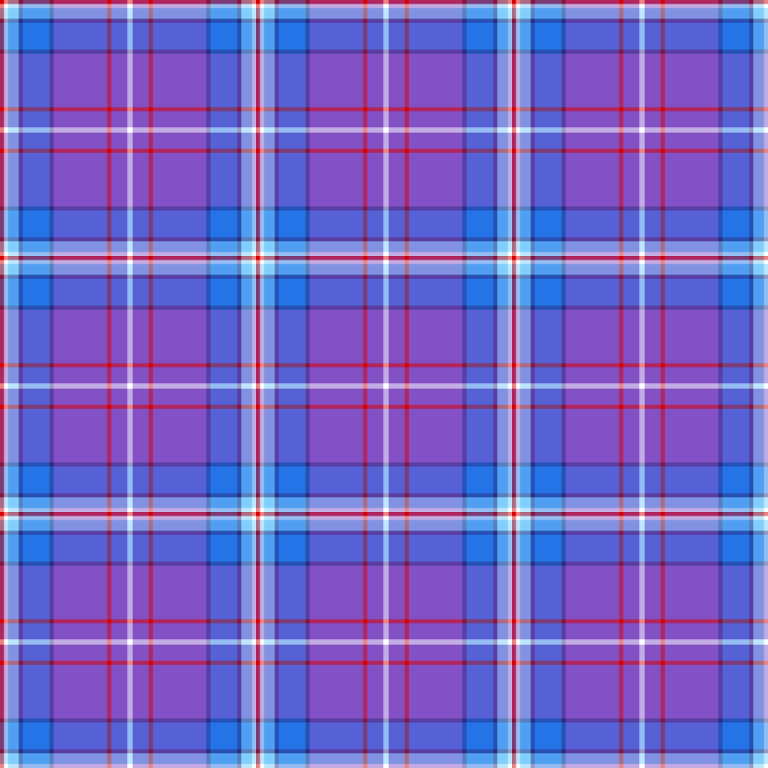Scottish Americans throughout the United States are lamenting the loss of a significant part of the Celtic festival season due to restrictions on group gatherings as a result of COVID-19. As of early May, most Highland games and festivals have been cancelled through August — pretty much worldwide. No doubt the 2021 season will be welcomed with gusto (and more than a few wee drams). In the meantime, what’s to be done with all the creative energy that typically goes into celebrating your Scottish heritage at those festivals?
Why not design your own personal tartan online? It’s a fun, educational and creative way to show your Scottish heritage. I am sure that Sir Walter Scott, the instigator of the early 1800s tartan rush and promoter of all things tartan, would encourage and celebrate our efforts in digital tartan design!
Why I did it
When I first started brainstorming ideas for the Scottish American Insider, branding was a big consideration. In addition to figuring out what I’d be writing about, I needed to decide what the blog was going to look like. I sent some design ideas to a friend, and her first response was “why aren’t you using YOUR tartan?” I explained that as a descendant of numerous Scots-Irish ancestors, I had connections to several different clans — as do many Scottish Americans and Scots-Irish Americans.
But her question about MY tartan stuck with me. I had already developed a brand color palette with colors that had special meaning to me, and I knew that tartans were not limited to traditional clan tartans. According to historians, the Celts have been weaving tartans for nearly 3,000 years, and not surprisingly, there are nearly 13,000 tartan designs registered today! Why not add one more to the illustrious history of tartans!
Getting started
Before diving in with my online design, I spent some time on the Scottish Register of Tartans (the Register), which is the official tartan register. For £70 GBP or $87 USD, you can apply to register a tartan by providing a thread count, an image and a proposed tartan name. On the Register’s website, I was able to view digital samples of designs, the designer, registration notes, restrictions on use, and after signing up for a free account, I could also request thread counts for specific designs. When starting your online tartan design, it may be easier to use the thread count of a design that you like and then adapt.
I also visited the Scottish Tartans Authority (STA), which is a charity that preserves, protects and promotes tartans. Even though the initial use of my tartan was to be digital, I wanted to be sure my tartan would lend itself to weaving should I decide to have custom fabric woven for a kilt, kilt skirt or suit.
Pattern and color basics
From the STA, I learned that the pattern of a tartan is called the “sett,” and the size of the sett is quite important in weaving. According to STA, the average-sized sett for a kilt in modern times is five to six inches (12-15 cms) which gives around 250 threads per sett using a medium-weight wool yarn. The Register recommends a sett size of six to seven inches which gives you 240-260 threads. A standard rule of thumb is that a complex repeating design lends itself to a slightly larger sett size and a simpler pattern looks better smaller.
Besides understanding how to construct a pattern or sett based on thread counts, I had to learn how colors are used in both online tartan designs and woven fabric. Six colors are the typical maximum for a tartan, but some have more (the Anderson tartan is one of the few with seven) and many have less. Ideally, the colors you choose have a symbolic meaning to you.
The Scottish American Insider tartan has six colors:
- Red, white and dark blue for the American flag
- Medium blue and white for the Scottish flag
- Light blue for the ancestral McFalls eye color
- Purple for the Scottish thistle and the Great Smoky Mountains
Not only are these colors meaningful to me, but blue and purple — the two dominant colors in the tartan — are also favorite colors.
If you are designing a tartan for fun or even to be woven, then you can be flexible with colors. Most online tartan design tools, including the one at USA Kilts, provide general color options. Before getting your tartan woven, should you choose to do that, you will have to get yarn samples from a weaver, and then you can select your final colors.
Going digital with color
Because I intended to use my color palette in the design of my blog website as well as in my tartan design, I needed specific HEX color codes for each of my colors. HEX colors are a six-digit combination of letters and numbers used to describe specific colors online, primarily for websites. While there are a number of online color palette tools, I find Coolors to be a simple, easy-to-use site for playing with combinations of colors that are identified by HEX codes.
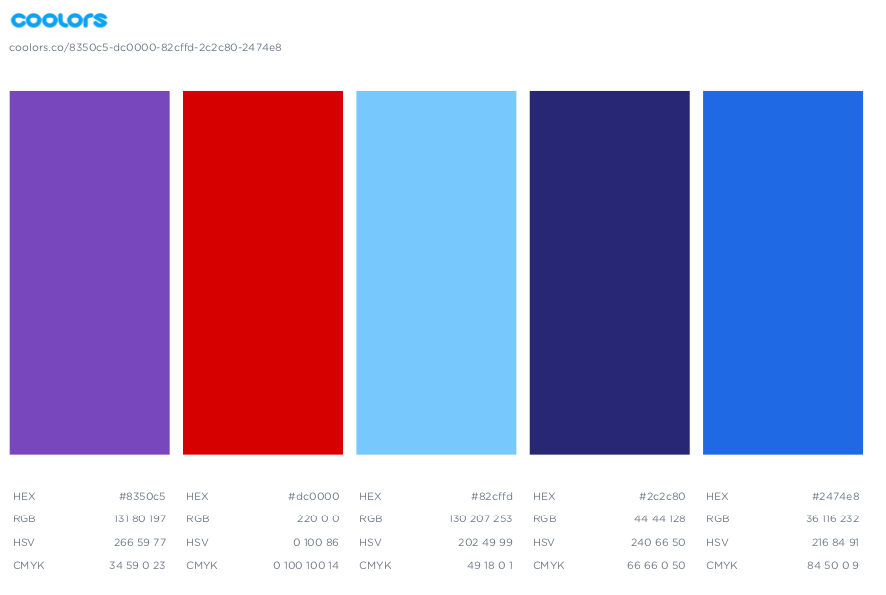
HEX colors are also required if you intend to register your design with the Scottish Register of Tartans. The Register has a list of HEX color codes that it uses to digitally display your tartan design on their website, and you will have to select codes from their list as part of registration.
Another reason you might want to determine your tartan colors using HEX codes is if you plan to make or purchase a product with the digital tartan design on it. Numerous websites today give us the option to purchase print-on-demand products with user-submitted artwork.
Online tartan designers
I experimented with three different online tartan design tools — each had its benefits and drawbacks. I’ve listed them in order of preference. To save designs and access some features, you’ll need to create a free account at each site.
USA Kilts Tartan Designer: I primarily worked with this tool because it gave me the ability to choose my colors using HEX codes, and it was super easy to use. Being able to see how the design would translate digitally was great for website purposes, but unlike the other sites, it didn’t offer a rendering of my design as fabric. If you plan to have your design woven this is a disadvantage. It also doesn’t give a thread count — though it does give an estimate of sett size — so you’ll need to learn to calculate the thread count for yourself.
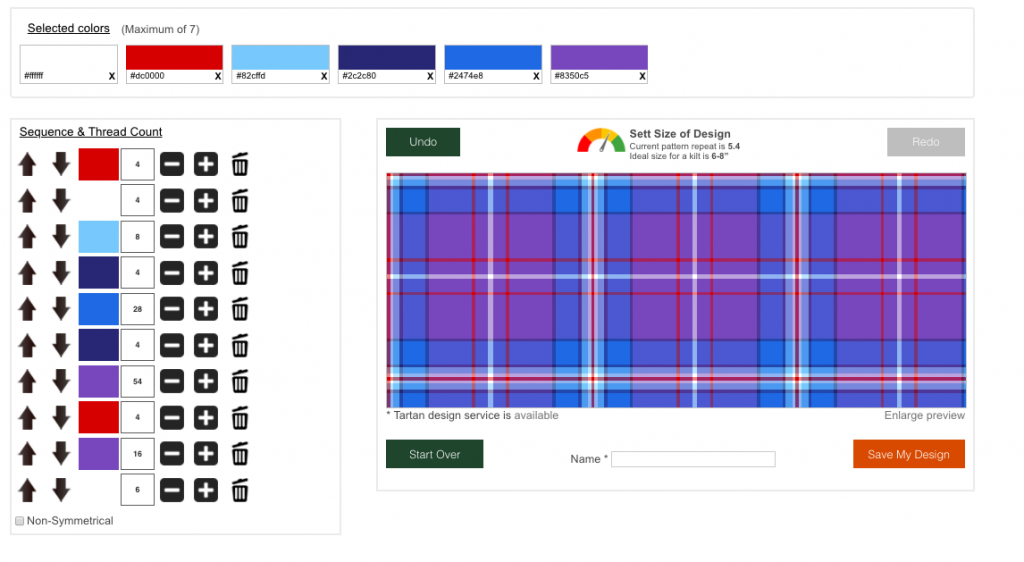
Clan.com Tartan Designer: This site was also easy to use, and I preferred it for fabric representation as its colors are based on a weaver’s palette. If your primary goal is a tartan design for custom woven fabric this tool should give you a reasonable idea of what the fabric will look like. Before rebranding as Clan.com, this site was ScotWeb, and the site still has its older tartan design tool up. I used it before trying the newer tool and liked that I got thread count information, which I didn’t get with Clan.com.
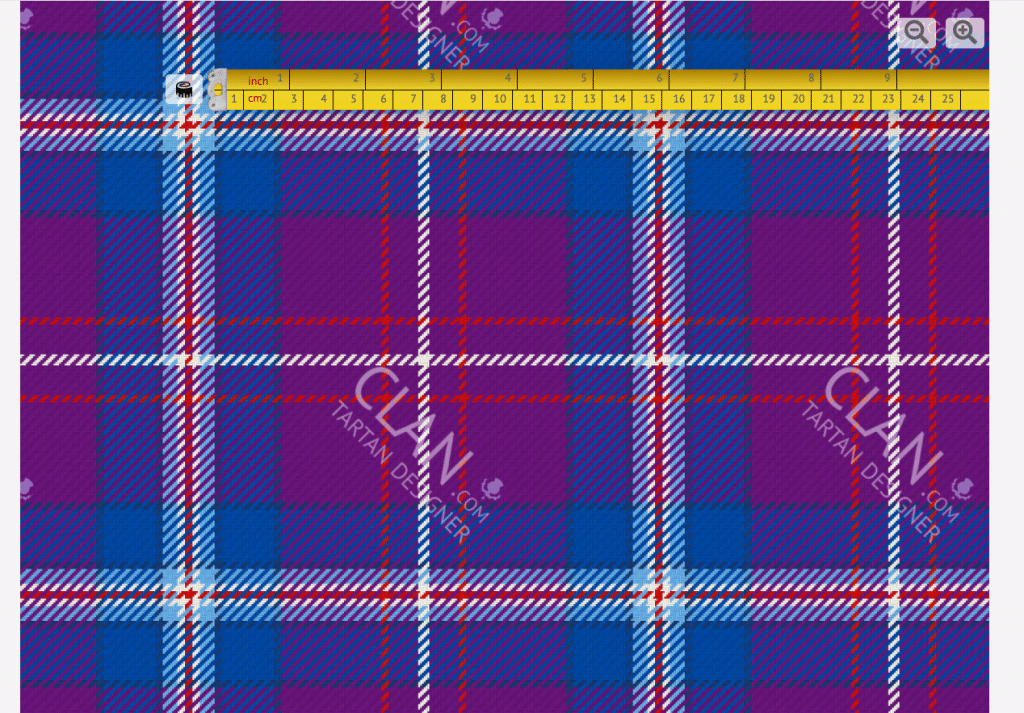
St. Kilda Store Tartan Designer: Working with colors was a bit frustrating on this site, but it provided a photorealistic image of the design in standard, weathered, modern and flat print.
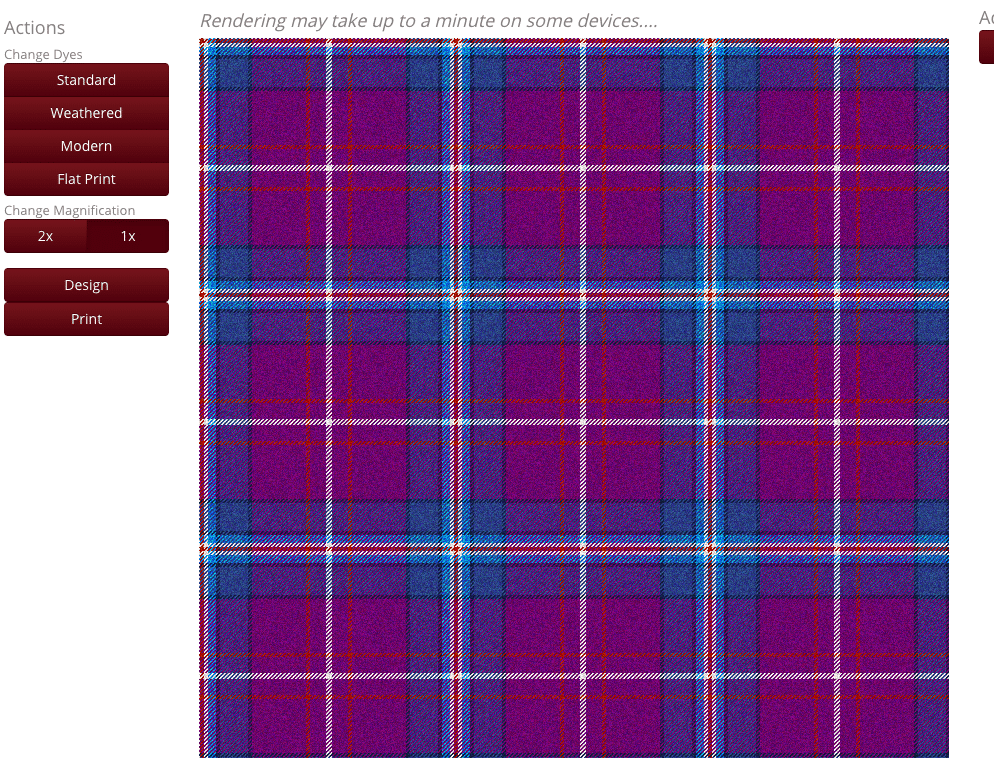
Adapting for print-on-demand products
While various commercial tartan design tools make it easy to create a design, their primary goal is for you to have the tartan design woven and made into a kilt. The output you get doesn’t usually lend itself to digital production.
That’s where Susan Wallace, the owner and designer for Plaidwerx, comes in. She has created a digital collection of unique contemporary and traditional plaids, including traditional clan tartans – all sized for a variety of customizable print-on-demand products and gifts. She can take your custom tartan design, create appropriately sized digital files and apply them to products you choose on Zazzle.
Before producing digital files of the Scottish American Insider tartan for my website, Susan provided feedback on whether my design would scale up or down appropriately online. For example, I needed to increase the thread count of the thinnest lines in my design because when reproduced digitally in a small size, they got lost in the design.
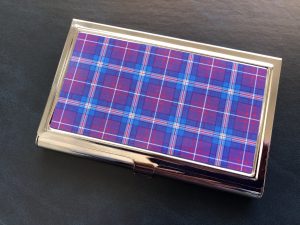
Once those adjustments were made, Susan created the digital files and applied them to leggings, a tote bag, a business card holder and a computer sleeve on Zazzle. She then sent me a direct link to the products so they were not available to the public. She doesn’t charge for this service as she receives a commission from Zazzle when you order a product using one of her digital designs. I love the items I’ve ordered in my personal tartan and will be asking Susan to apply the design to other products.
Susan’s years of experience as an artist give her the ability to produce quality digital files and therefore a great end product for you. And Susan’s expertise with plaid and tartan also comes from her Scottish DNA! With ancestral connections to more than a dozen Scottsh clans, Susan traces her Wallace ancestry to William Wallace — though not THAT William Wallace. Her ancestor immigrated from Ireland in the late 1700s and married Sarah “Sallie” Boone, first cousin to the well-known frontiersman, Daniel Boone.
Design what you like
Susan’s advice in creating your personal tartan is “to study tartans you like to determine what it is you like about them.” One of Susan’s favorites is the Paisley, Scotland district tartan. She also likes the weathered, or reproduction, colorway of most tartans: “I find the muted tones soothing, and they evoke memories of the Scottish countryside.” She also recommends that once you’ve got a pattern and colors that you like, you should also keep in mind contrast, alternating light, medium and dark.
Share with Scottish American Insider
I would love to see your personal tartan designs and to share them in a follow-up blog post here. Send me a brief description and photo (.png or .jpg) of your tartan design by May 31, and I will post in a photo gallery in early June.
SEND:
Email: scotaminsider@gmail.com
FB Messenger: https://www.facebook.com/scotaminsider/
Read next: My experience registering my design with the Scottish Register of Tartans.


